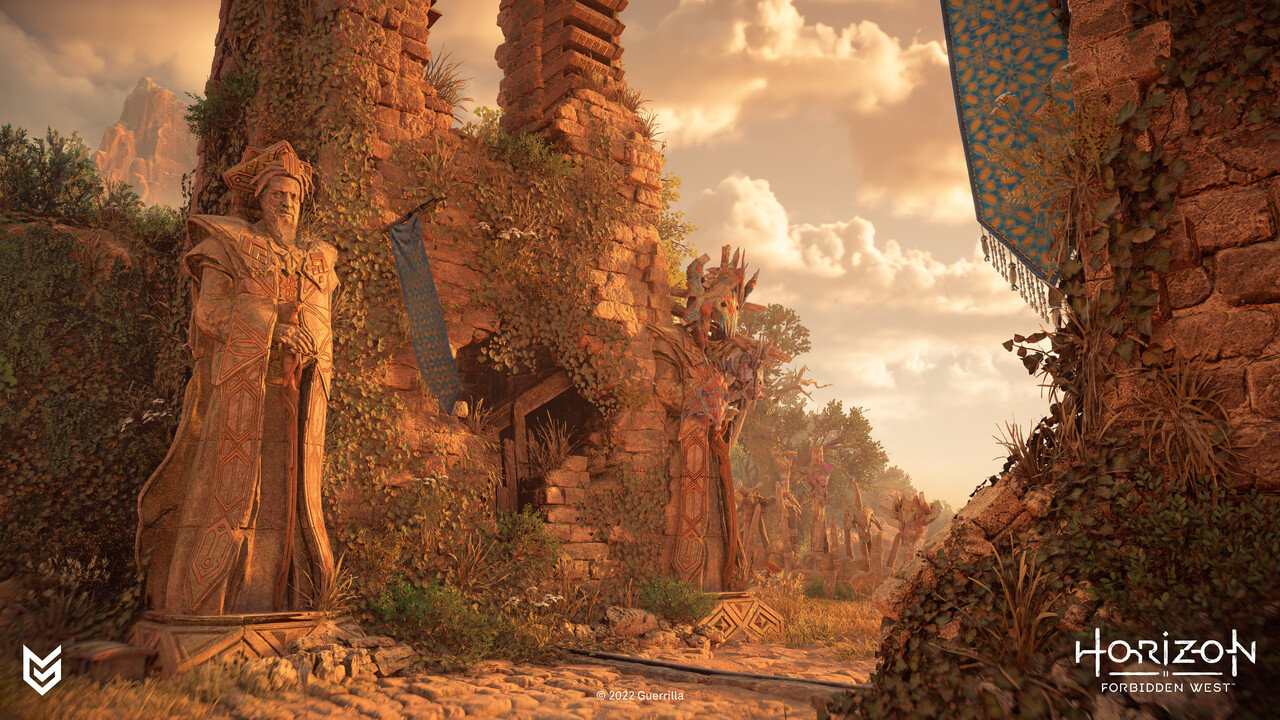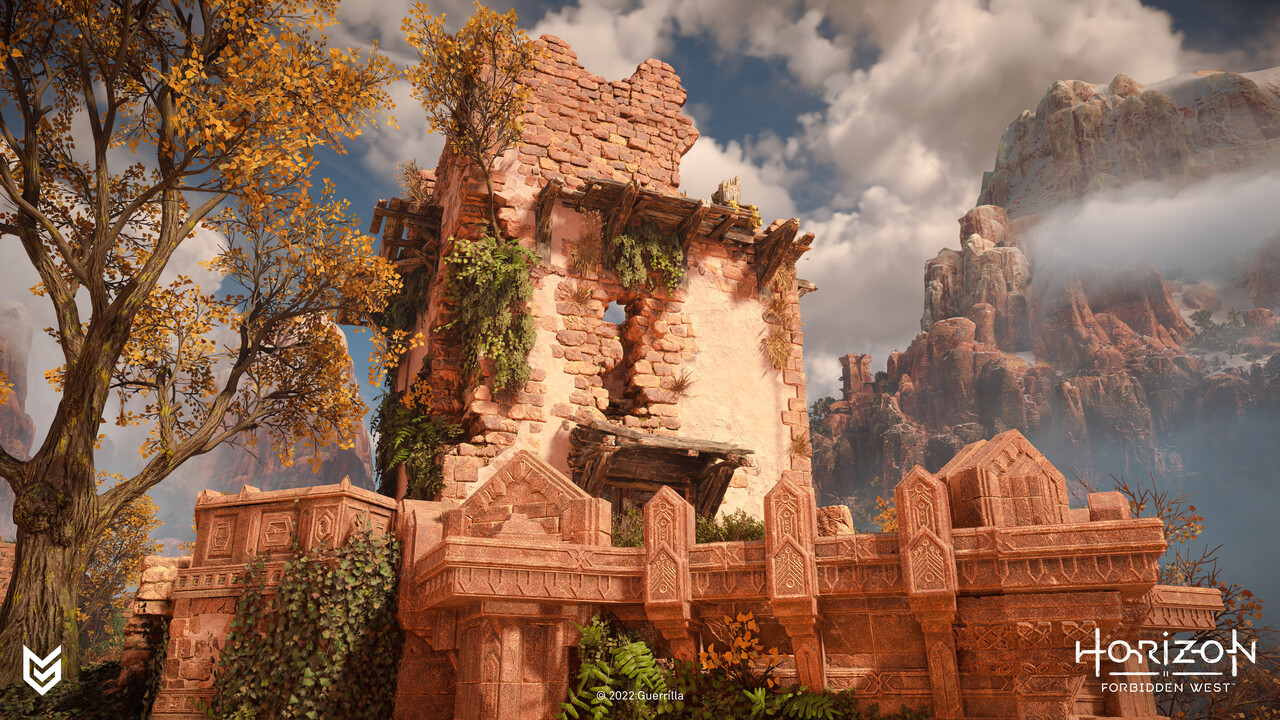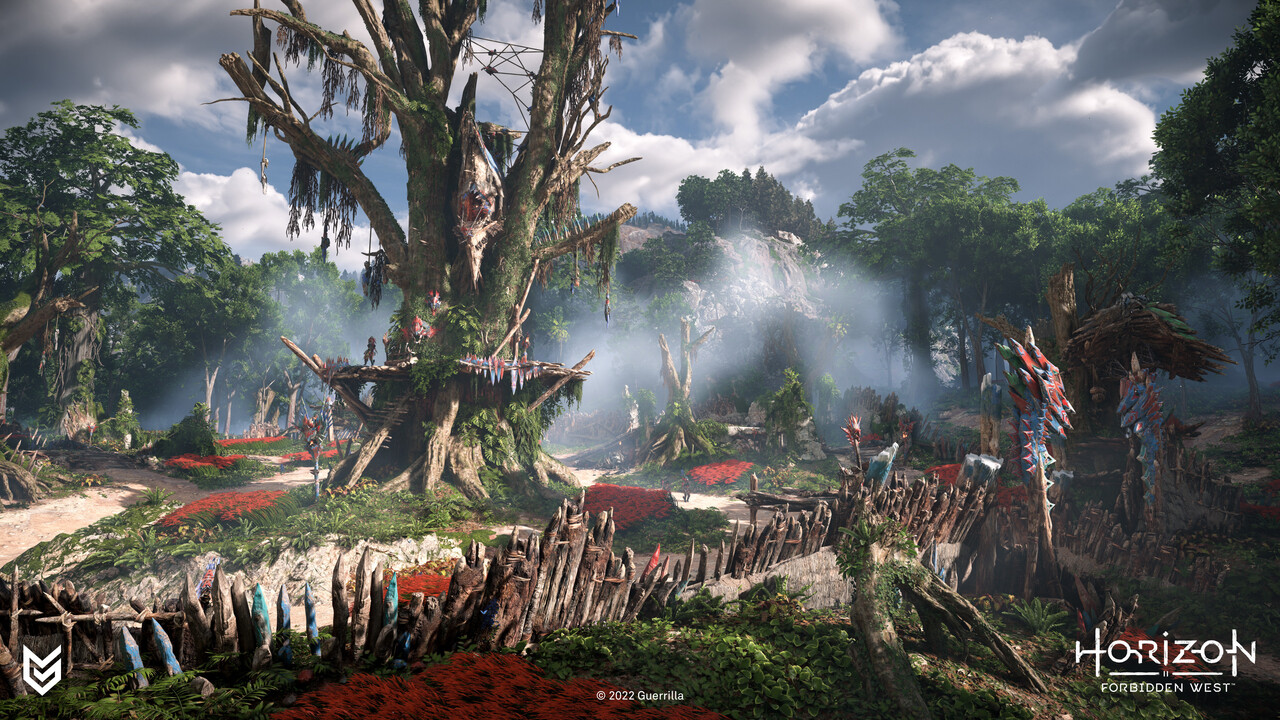Introduction
As a child, I developed an interest in games, despite being limited to playing older games due to my outdated PC. This sparked my curiosity and I began exploring the world of gaming. I came across a book for modding and level design in Half-Life 2 which gave me insight of pursuing a career in this field. I made the decision to enroll in a game art course where I could further develop my skills and explore potential career paths.
I began my professional journey in the videogames industry as a 3D environment artist, initially focusing on texturing and shaders. As I progressed in my professional career, I learned the importance of understanding shaders, which sparked my interest in learning to code. This curiosity led me to explore the technical aspects of game development and delve into the world of technical art.
My passion for game development extends beyond a specific role or area of expertise. I have a broad interest in all aspects of game development, which has driven me to continuously expand my knowledge and skills. I am always eager to learn and understand how different processes work and I actively seek opportunities to deepen my understanding in areas where I may have knowledge gaps.
One of the key factors that has contributed to my success as a technical artist is my willingness to help others and make their lives easier. I strive to find ways to improve workflows, streamline processes and implement tools or techniques that enhance efficiency. By staying updated with the latest developments in technology, I can identify opportunities for innovation and contribute forward-thinking ideas to make development smoother, faster and more organized.
Securing my current position at Bend Studio (and my previous position at Guerrilla) involved a combination of factors. Apart from honing my technical art skills, I actively engaged in networking events, conferences and workshops. These platforms allowed me to connect with industry professionals and showcase my work, which in turn opened doors to new opportunities. Additionally, I maintained a portfolio that demonstrated my growth as an artist and effectively communicated my abilities to potential employers.
I think, my success as an artist in the game industry can be attributed to my continuous learning mindset, my dedication to technical art and my commitment to improving processes and assisting others. By staying curious, adaptable and proactive, I think, aspiring game artists can increase their chances of breaking into the industry and building successful careers.
Secrets of Success
For environment artists, it is essential to focus on developing traditional art skills such as composition, color theory and scale. These skills contribute to creating visually appealing and cohesive environments. Additionally, gaining a solid understanding of the technical workflows involved in environment creation, such as high-to-low poly modeling and baking and texturing assets is crucial. Building complete environments from start to finish helps getting familiarized with the entire process, even if in some studios, specific tasks may be assigned. It is important to comprehend how all the different parts work together and the significance of each component.
On the other hand, for technical artists, having a comprehensive understanding of various aspects is vital. This includes not only 3D-modeling and texturing assets but also importing them into the game engine. Learning to program small tasks or writing scripts is invaluable for automating repetitive processes and streamlining workflows. Basic programming knowledge in popular languages like Python or C can empower technical artists to accomplish a wide range of tasks, provided the engine or tools support it.
Regardless of the specific artistic discipline, it is beneficial for game industry artists to develop a deep understanding of the backend workings of their chosen game engine. This knowledge helps artists make informed decisions and optimize their work to achieve the desired visual and technical results.
Staying Up to Date
To stay up-to-date with the latest techniques and technologies in game art, I use a variety of strategies. One of my go-to resources is ArtStation, which offers a wealth of tutorials on its marketplace and it’s Learning section (with a subscription). These tutorials provide valuable insights into artists' workflows and processes, allowing me to gain inspiration and grow as an artist. Learning from the experiences and techniques of other artists is an effective way to improve our own skills.
Another valuable platform for staying informed is YouTube. There are numerous channels dedicated to game art that provide in-depth videos, tutorials and discussions. Additionally, in recent years, the Game Developers Conference (GDC) has made many of its sessions freely available on YouTube, featuring industry professionals sharing their expertise and insights.
For high-quality tutorials that are curated by professionals, Gumroad and Gnomon are excellent resources to consider. These platforms offer tutorials and courses that meet a certain quality standard, ensuring that you're learning from reputable sources.
Apart from these specific resources, I highly recommend actively participating in the game art community. Joining forums, engaging in discussions on social media platforms and attending industry events or conferences can provide valuable networking opportunities and expose you to the latest trends and advancements in the field. Connecting with other artists, sharing knowledge and seeking feedback can greatly contribute to your growth and relevance as a game artist.
Lastly, it's essential to keep an eye on industry publications, blogs and websites that focus on game art. These sources often publish articles, interviews and case studies that delve into the latest techniques, technologies and industry insights.
By leveraging these strategies and resources, aspiring game artists can stay informed, continuously improve their skills and remain relevant in the rapidly evolving field of game art.
Creating an Effective Portfolio
Creating a strong portfolio is crucial for aspiring game artists who want to impress game studios and secure a job in the industry. For technical artists, including completed tools in your portfolio is essential. It's better to have a simple but functional tool than a cluttered one that doesn't work properly. Be prepared to explain the purpose and functionality of your tools or scripts and demonstrate them effectively. The ability to showcase your problem-solving approach and the reasoning behind your design choices is important.
Demonstrate your growth in skill set. Showcasing your progression over time is valuable. Highlight new techniques, software proficiency, or artistic styles you have learned and implemented. This demonstrates your adaptability and dedication to continuous improvement.
Focus on quality over quantity. Curate your portfolio to showcase your best work. It's better to have a smaller selection of high-quality pieces than a large collection of mediocre ones. Pay attention to detail and ensure that your work is polished and professional.
Provide clear and concise documentation for your projects. This includes descriptions, breakdowns and explanations of your process. Effective documentation helps reviewers understand your work and the thought process behind it. Although it may be time-consuming, investing in thorough documentation is worthwhile in the long run. As time passes, it becomes easy to forget the specific details of your project, so it would be unfortunate if you couldn't demonstrate them anymore. Additionally, consider writing a reflection report to evaluate both the successes and challenges you encountered during the project.
Using Social Media
Personally, I have found the landscape of visibility for artists to have changed significantly over the years. While platforms like Polycount.com were popular in the past, I have found that being active on ArtStation, Twitter, LinkedIn and participating in select Discord channels has been most effective for me.
ArtStation is a dedicated platform for artists, allowing you to showcase your work and connect with other professionals in the industry. It offers a built-in audience that appreciates and understands the artistry behind game development. Twitter, on the other hand, provides a broader reach and allows you to engage with a wider gaming community, including developers, enthusiasts and potential employers. LinkedIn is useful for establishing a professional presence and connecting with industry professionals and recruiters.
Regularly share your artwork, progress and insights into your creative process. Engage with the community by following and interacting with other artists and game developers. Actively participate in discussions, share valuable resources and provide constructive feedback to others. Building a positive and supportive presence can help you gain visibility and establish meaningful connections.
Job Search Websites
To find job listings for game studios, it is advisable to check the websites of game developers as they are usually the most up-to-date source maintained by the recruitment teams. Additionally, websites like 80.LV and Artstation showcase numerous open positions in the industry. Another valuable resource is GameDev Discord channels, where you can connect with others to discover available opportunities and directly communicate with developers. It's worth noting that positions may become available through these channels before being officially posted online.
Furthermore, consider sending out open applications to game studios to explore potential opportunities. By utilizing these websites and resources, staying proactive and maintaining a professional network within the game industry, you can increase your chances of finding job opportunities.
Advice
Breaking into the game industry and building a successful career as a game artist requires dedication, continuous learning and a few key principles that have helped me succeed.
It is important to prioritize the development of a strong foundation in traditional art skills like drawing, composition, color theory, sculpting and/or anatomy. These skills will be fundamental to your artistic abilities and will play a crucial role in creating visually impressive game assets. Plus, they can be valuable when presenting and showcasing your ideas and pitches.
If you aspire to work for a specific game company and want to increase your chances, I would advise to research their current and past projects. Focus on creating a project that aligns with their game type or art style. By doing so, you can demonstrate your skills and abilities in a way that directly relates to the work the company is involved in. This not only helps you grow as an artist but also showcases to potential future employers that you are capable of handling the specific requirements of their ongoing projects.
The game industry is constantly evolving and it's crucial to stay up-to-date with the latest techniques, tools and technologies. Invest time in learning new software, studying industry trends and exploring different art styles. Attend workshops, conferences and the before mentioned online courses to expand your knowledge.
Actively seek feedback from fellow artists, mentors and industry professionals. Constructive criticism helps you grow and improve your work. Be open to feedback, iterate on your designs and constantly strive for excellence.
Embrace adaptability and problem-solving skills to overcome obstacles and find creative solutions. And accept the iterative nature of game development and be open to exploring different approaches to achieve the desired results.





